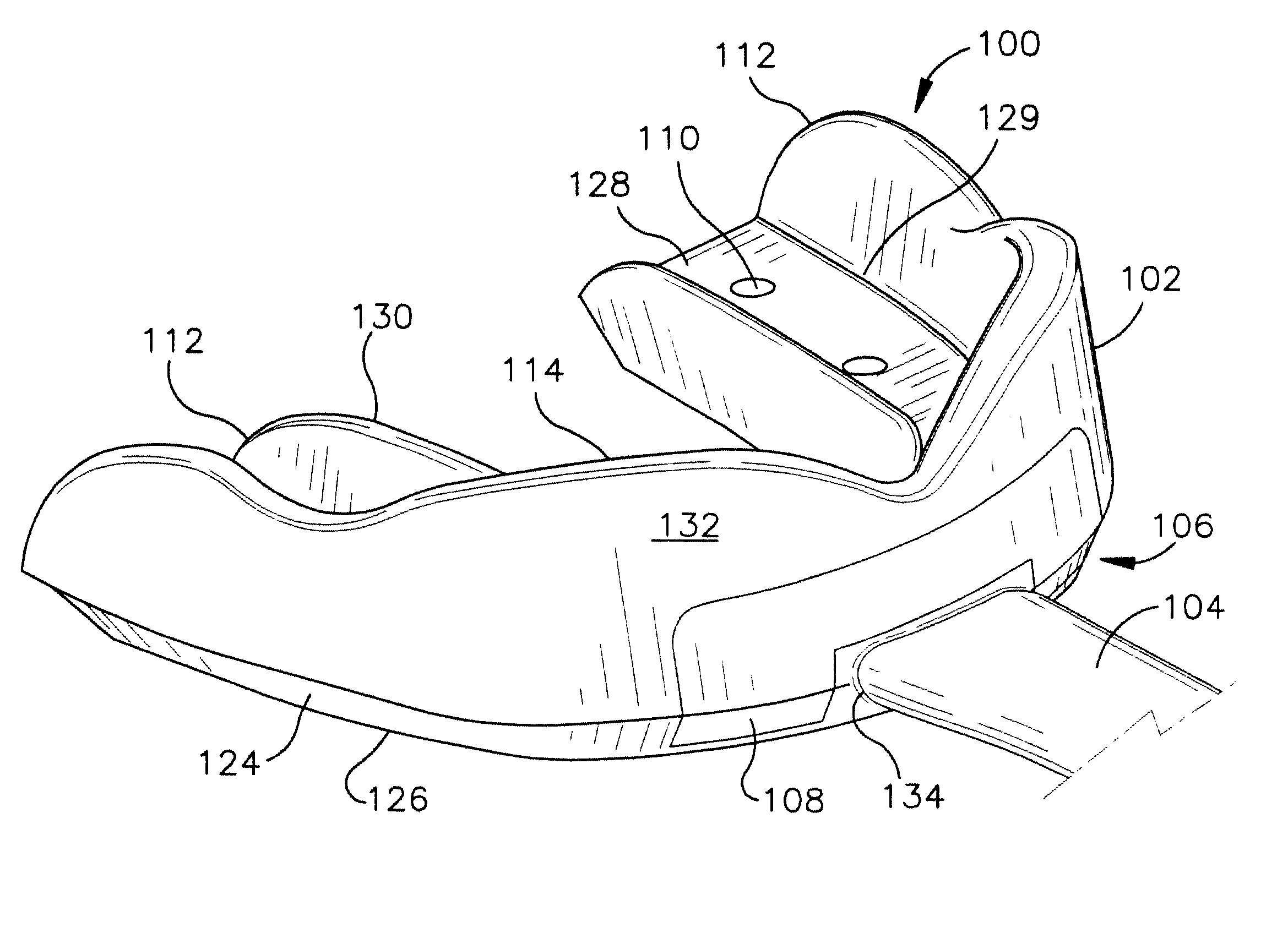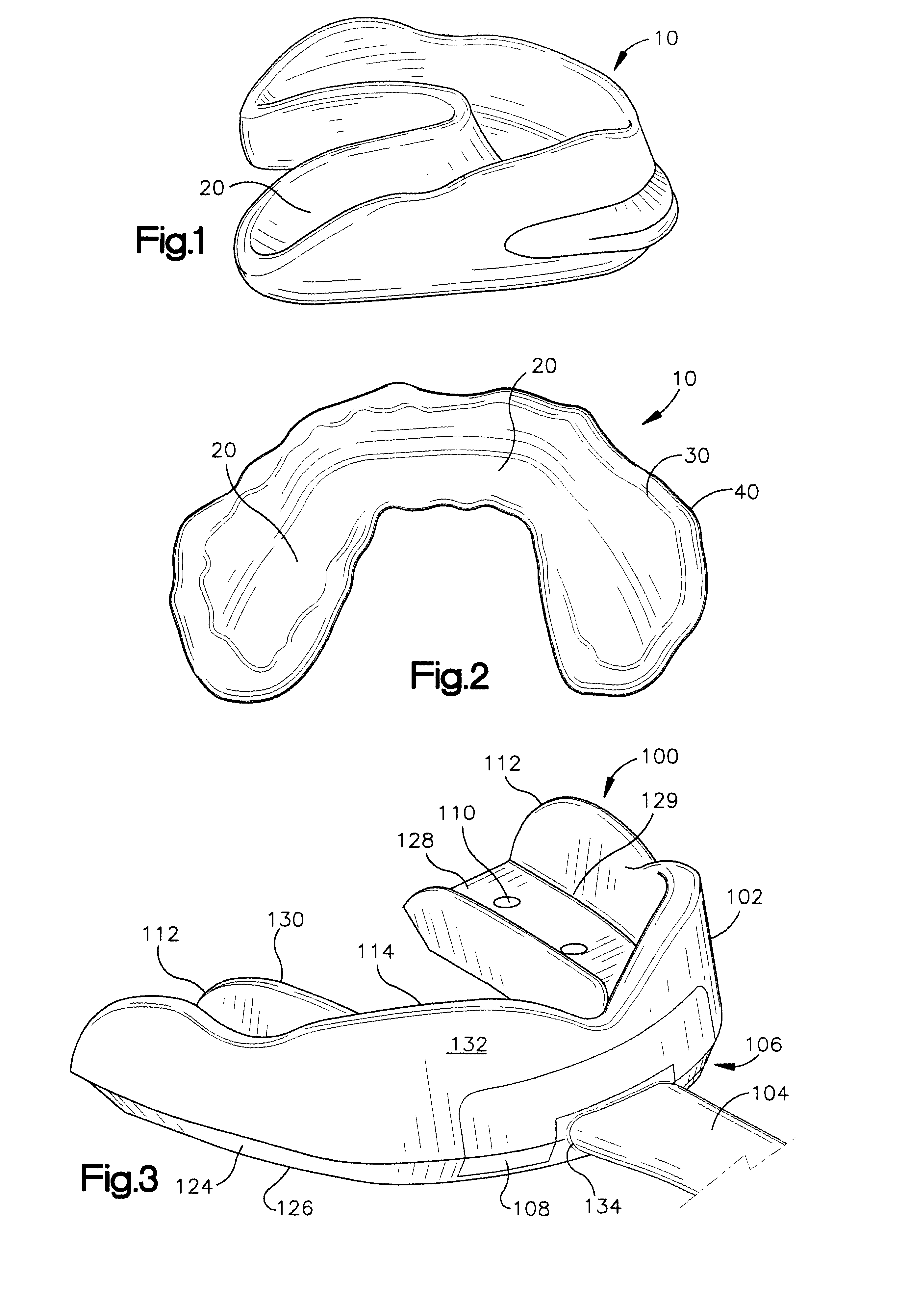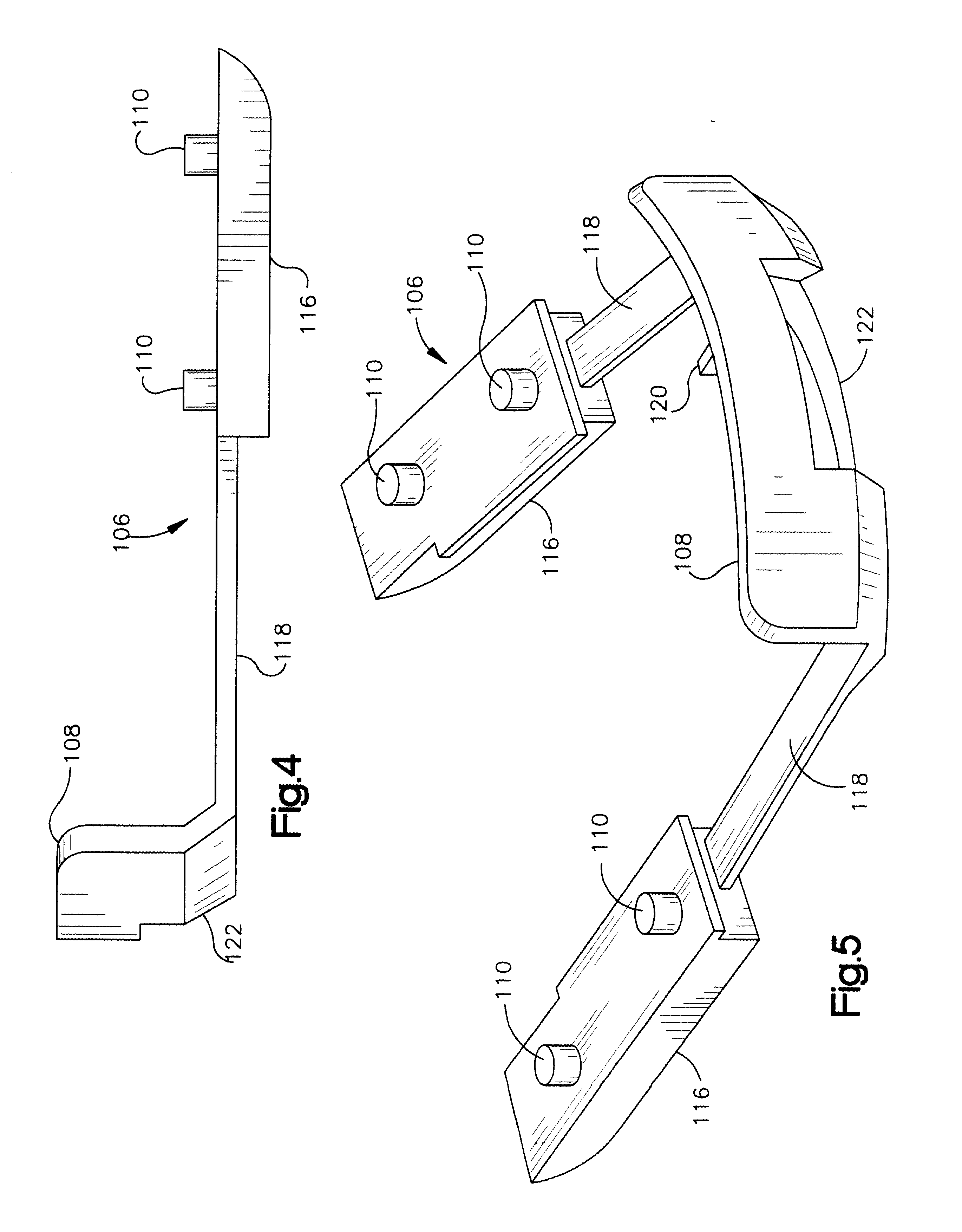Mouthguard and method of making
a mouthguard and mouth technology, applied in the field of mouthguards, can solve the problems of clogging ears, earaches, ringing in ears, etc., and achieve the effects of reducing the risk of ear infection, and improving the quality of mouthguards
- Summary
- Abstract
- Description
- Claims
- Application Information
AI Technical Summary
Problems solved by technology
Method used
Image
Examples
example 2
Using ASTM-D3763, Compound A, a 75 / 25 blend of EVA / TPU, was evaluated and the impact properties are summarized in Table 2. A total of five specimens were tested and measurements were taken and then averaged for impact energy (joules), impact velocity (m / sec), energy to maximum load (joules), and total impact energy (joules). As seen in Table 2, the average energy to maximum load was determined to be 20.86 joules and the total impact energy was 31.96 joules. As seen in FIG. 10, when Compound A is compared to the EVA control, there is nearly a 50 percent increase in the total energy absorbed during impact. As seen in FIG. 11, when Compound A is compared to the EVA control, there is nearly a 300 percent increase in the energy to maximum impact.
example 3
Using ASTM-D3763, Compound B, a 50 / 50 blend of EVA / TPU, was evaluated and the impact properties are summarized in Table 3. A total of five specimens were tested and measurements were taken and then averaged for impact energy (joules), impact velocity (m / sec), energy to maximum load (joules), and total impact energy (joules). As seen in Table 3, the average energy to maximum load was determined to be 24.28 joules and the total impact energy was 25.86 joules. As seen in FIG. 10, when Compound B is compared to the EVA control, there is nearly a 21 percent increase in the total energy absorbed during impact. As seen in FIG. 11, when Compound B is compared to the EVA control, there is nearly a 380 percent increase in the energy to maximum impact. Further physical data for the 75 / 25 EVA / TPU blend is shown in FIG. 13.
example 4
Using ASTM-D3763, Compound C, a modified EVA material, was evaluated and the impact properties are summarized in Table 4. A total of five specimens were tested and measurements were taken and then averaged for impact energy (joules), impact velocity (m / sec), energy to maximum load (joules), and total impact energy (joules). As seen in Table 4, the average energy to maximum load was determined to be 7.4 joules and the total impact energy was 17.4 joules. As seen in FIG. 10, when Compound C is compared to the EVA control, there is nearly a 20 percent decrease in the total energy absorbed during impact. As seen in FIG. 11, when Compound A is compared to the EVA control, there is nearly a 40 percent increase in the energy to maximum impact.
PUM
 Login to View More
Login to View More Abstract
Description
Claims
Application Information
 Login to View More
Login to View More - R&D
- Intellectual Property
- Life Sciences
- Materials
- Tech Scout
- Unparalleled Data Quality
- Higher Quality Content
- 60% Fewer Hallucinations
Browse by: Latest US Patents, China's latest patents, Technical Efficacy Thesaurus, Application Domain, Technology Topic, Popular Technical Reports.
© 2025 PatSnap. All rights reserved.Legal|Privacy policy|Modern Slavery Act Transparency Statement|Sitemap|About US| Contact US: help@patsnap.com



